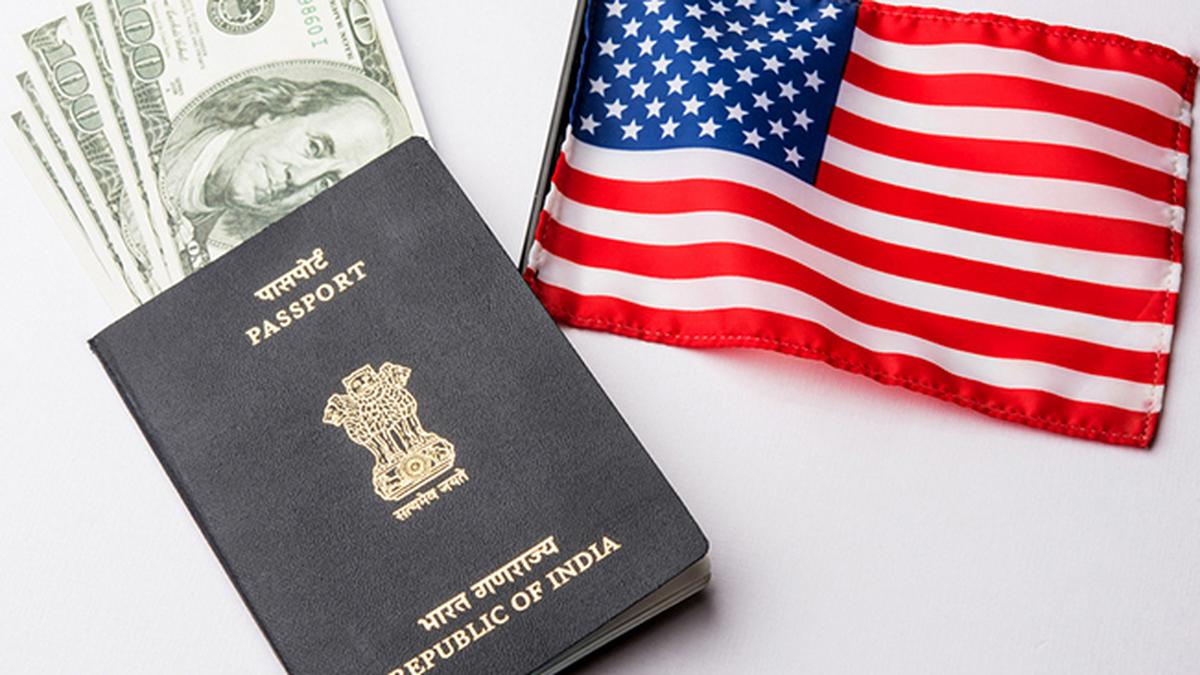Washington: In a move that has sent shockwaves through India’s professional community, US President Donald Trump has signed an executive order raising the annual fee for the H-1B visa to nearly USD 100,000—around ₹88 lakh. The steep hike, applicable to all new applicants, directly impacts thousands of Indian engineers, doctors, scientists, and IT specialists who have long been the backbone of America’s technology and innovation ecosystem.
For decades, Indians have been the largest beneficiaries of the H-1B programme, accounting for nearly 70–73% of all visas issued annually. In 2023, over 100,000 Indians secured H-1Bs. That number fell to 71,219 in 2024 and dropped further to just 63,323 in 2025—a decline of nearly 35–37%. With the new fee hike, the numbers are expected to shrink even further.
The key question now: how many Indians will take the risk of paying such a staggering amount? The decision is likely to impact not just professionals but also US companies, which have historically depended on affordable, high-quality Indian talent to drive growth in Silicon Valley and beyond.
For India, however, this development could turn crisis into opportunity. If the right policies are put in place, lakhs of skilled professionals may choose to stay and work in India, energizing domestic industries, startups, and research institutions. India’s software export market, already valued at around USD 158 billion, is projected to cross USD 197 billion by 2030. With remote and hybrid work models gaining global acceptance, American firms may increasingly prefer to employ Indian talent directly from India, reducing costs and logistical hurdles.
This shift could also supercharge India’s startup ecosystem. Young professionals who once looked to the US for career opportunities may now launch ventures at home, fostering entrepreneurship, job creation, and a stronger culture of innovation. Universities and technical institutes, too, stand to benefit by preparing students to contribute globally while remaining rooted in India.

Challenges, however, remain. Competitive salaries, growth opportunities, and world-class work environments will be critical to retaining top talent. Without improvements, professionals may look instead to Canada, Europe, or Australia. Strengthening infrastructure—data centers, reliable internet, uninterrupted power supply, and advanced research facilities—will also be essential, as will reforms in taxation and regulations to encourage foreign investment and competitiveness.
The US, too, may feel the consequences. Losing affordable Indian expertise could increase costs for American firms, forcing them to either outsource more work to India or pay higher wages to local employees. Both options could raise operational pressures and affect the overall competitiveness of the US economy.
For India, the moment is decisive. By investing in skills development, research and innovation, and business-friendly policies, the country can turn potential brain drain into brain gain. If seized wisely, this opportunity could help transform India into a global talent hub.
In the end, while the ₹88 lakh H-1B visa may dampen the American dream for many Indians, it could spark a new era for India itself—where homegrown talent fuels innovation, growth, and self-reliance on Indian soil.





